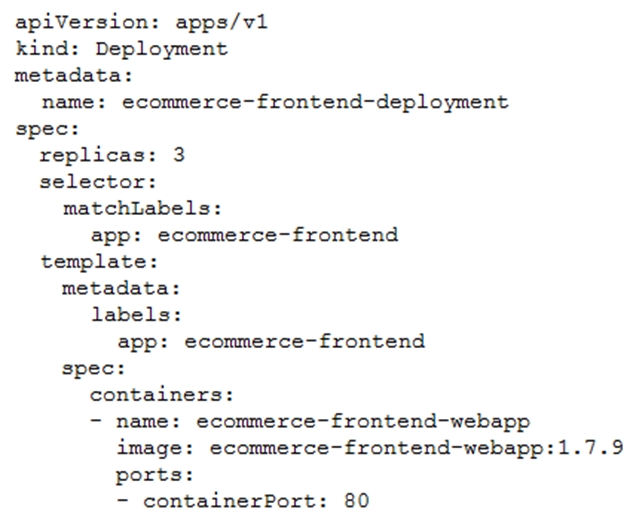Google Professional Cloud Developer Exam Practice Test
Your application is deployed in a Google Kubernetes Engine (GKE) cluster. When a new version of your application is released, your CI/CD tool updates the spec.template.spec.containers[0].image value to reference the Docker image of your new application version. When the Deployment object applies the change, you want to deploy at least 1 replica of the new version and maintain the previous replicas until the new replica is healthy.
Which change should you make to the GKE Deployment object shown below?

Answer : D
You are designing an application that uses a microservices architecture. You are planning to deploy the application in the cloud and on-premises. You want to make sure the application can scale up on demand and also use managed services as much as possible. What should you do?
Answer : B
https://cloud.google.com/anthos/run
Integrated with Anthos, Cloud Run for Anthos provides a flexible serverless development platform for hybrid and multicloud environments. Cloud Run for Anthos is Google's managed and fully supported Knative offering, an open source project that enables serverless workloads on Kubernetes.
HipLocal wants to reduce the number of on-call engineers and eliminate manual scaling.
Which two services should they choose? (Choose two.)
Answer : B, C
Your data is stored in Cloud Storage buckets. Fellow developers have reported that data downloaded from Cloud Storage is resulting in slow API performance. You want to research the issue to provide details to the GCP support team. Which command should you run?
Answer : B
You configured your Compute Engine instance group to scale automatically according to overall CPU usage. However, your application's response latency increases sharply before the cluster has finished adding up instances. You want to provide a more consistent latency experience for your end users by changing the configuration ot the instance group autoscaler. Which two configuration changes should you make? (Choose two.)
Answer : A, C
Your team develops services that run on Google Cloud. You want to process messages sent to a Pub/Sub topic, and then store them. Each message must be processed exactly once to avoid duplication of data and any data conflicts. You need to use the cheapest and most simple solution. What should you do?
Users are complaining that your Cloud Run-hosted website responds too slowly during traffic spikes. You want to provide a better user experience during traffic peaks. What should you do?
Answer : C